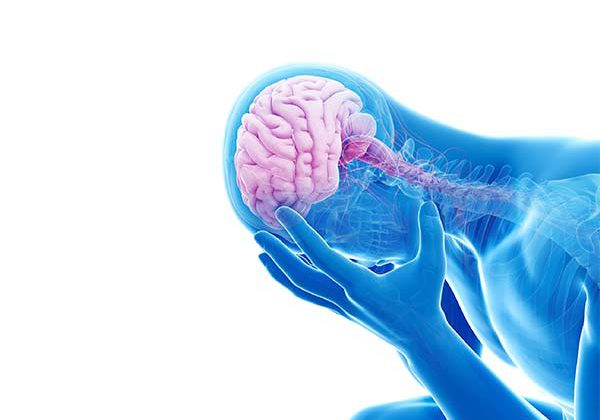Menopausal hormonal shift alters women’s metabolism
In midlife, the risk of cardiometabolic diseases increases in women more rapidly than in men. A study performed at the Faculty of Sport and Health Sciences of the University of Jyväskylä shows that changes in blood metabolite profile accompany the shift in sex hormone levels during menopause. This finding may help to explain the elevation in cardiometabolic disease risk.
Ovarian follicle production ceases during menopause, leading to changes in sex hormone levels. Simultaneously, the risk of cardiometabolic diseases increases in women; however, it is difficult to show whether this increase results from aging or the menopausal hormonal shift. Disease risk can be studied by measuring metabolite levels in the blood, and the overall metabolite profile provides a snapshot of the individual’s metabolic state. By simultaneously following sex hormone levels, the study performed at the University of Jyväskylä was able to determine for the first time what changes in the metabolite profile are related to the menopausal hormonal shift.
During menopause, women’s lipid metabolism changed in an unhealthy direction as the number of apolipoprotein B-containing lipoprotein particles circulating in the blood increased. Increases in lipid levels transported by the lipoproteins were also notable, especially concerning triglycerides carried by the VLDL particles and cholesterols carried by the LDL particles. VLDL and LDL particles are known to cause atherosclerosis.
HDL particles differ from the VLDL and LDL particles because HDL transports excessive cholesterol from the circulation to the liver, where it can be broken down. HDL particles differ in size. In the studied women, the number of small HDL particles increased during menopause, while the number of large HDL particles remained the same. Moreover, the concentration of triglycerides carried by the HDL particles increased. These changes are known to be related to elevated cardiometabolic disease risk.
“We have previously observed that HDL cholesterol levels increase during menopause,” explains Associate Professor Eija Laakkonen. “However, the increased HDL cholesterol levels do not seem to protect women from cardiovascular diseases. Our present, more comprehensive analyses show that the size distribution and content of HDL particles change in an adverse direction.”
Not all measured metabolites changed in an unfavorable direction
The study also observed changes in energy metabolism intermediates linked to metabolic health: The circulating ketone and citrate levels decreased, and glycerol levels increased during menopause. Of amino acid levels, glutamine decreased while leucine increased. Additionally, the blood fatty acid profile changed from unsaturated to a saturated direction.
“Based on earlier studies, these changes may relate to the worsening of insulin sensitivity, which can predispose women to type 2 diabetes,” says Doctoral Researcher Jari Karppinen.
“A positive finding was that during menopause, low-grade inflammation did not increase based on inflammation marker GlycA levels,” continues Karppinen. “Low-grade inflammation develops especially with overweight and unhealthy lifestyle habits, leading to a heightened risk for several chronic diseases. Our study suggests that the menopausal hormonal shift does not have similar independent effects on the condition.”
The importance of sex hormones on women’s metabolism was further supported by the finding that hormone replacement therapy started by a subset of participants seemed to prevent some of the adverse changes. In women who started hormone replacement therapy, the number of particles carrying LDL cholesterol decreased, and the number of large particles transporting HDL cholesterol increased. The same phenomenon has been previously observed in randomized controlled trials.
“Based on our findings, menopausal hormonal shift accelerates metabolic processes that predispose women to cardiometabolic diseases,” says Karppinen. “As women typically have one-third of their lives left after menopause, we encourage women to begin paying attention to healthy lifestyle habits at the latest during menopause.”
The study performed at the Gerontology Research Center and the Faculty of Sport and Health Sciences of the University of Jyväskylä is a part of the Estrogenic Regulation of Muscle Apoptosis (ERMA) study. In the study, 218 women were followed over the menopausal transition period with menstrual diaries and regular hormone measurements. Of the women, 35 started hormone replacement therapy during the follow-up. Metabolite levels were quantified by nuclear magnetic resonance spectroscopy. Statistical analyses were adjusted for age, follow-up duration, education level and lifestyle habits, and separately also for body fat percentage.
Source: University of Jyväskylä
Full bibliographic information
Jari E. Karppinen, Timo Törmäkangas, Urho M. Kujala, Sarianna Sipilä, Jari Laukkanen, Pauliina Aukee, Vuokko Kovanen, Eija K. Laakkonen, Menopause modulates the circulating metabolome: evidence from a prospective cohort study, European Journal of Preventive Cardiology, 2022;, zwac060,





